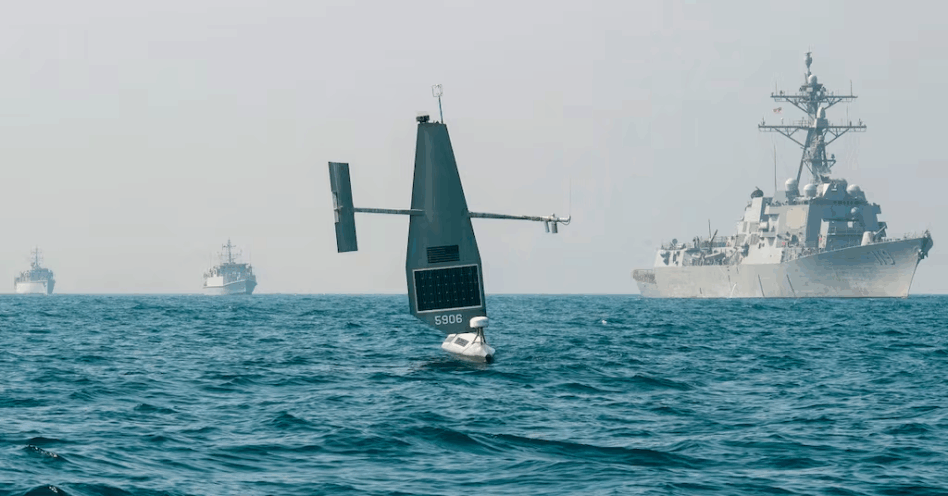Well, we’re back to remind you that maritime autonomy is all the rage. This morning, Saildrone announced in an exclusive release to Tectonic that the Department of Homeland Security (DHS) has signed a blanket purchase agreement (BPA) with a cap of $37M to buy the company’s unmanned vessels in support of the US Coast Guard (USCG).
While the exact number of vessels is yet to be determined (that’ll come soon), the BPA is aimed at providing “maritime domain awareness for safety of life at sea in international and U.S. coastal waters.”
“This contract will facilitate Saildrone’s ability to provide critical ISR support and has the real potential to transform how the Coast Guard operates across all mission sets,” Saildrone Senior Director for Homeland Security Charley Diaz told Tectonic in a statement. “Exciting times.”
Out at sea: We’ve written about Saildrone before: The company builds autonomous sailboat-like vessels that can stay at sea for months at a time and are super handy for things like maritime surveillance and domain awareness. Because they can stay at sea for so long, fleets of the company’s USVs can help maintain viability over huge swaths of water, like the Pacific or the Gulf of Mexico.
Saildrone’s wind- and solar-powered vessels:
- Can operate in GPS-denied environments.
- Have historically also been used for climate and oceanographic research.
- Work well as something like a forward observer in a hybrid fleet—they can go ahead and collect vital at-sea intelligence.
- Come in three sizes: the 23-foot Explorer, 33-foot Voyager, and 74-foot Surveyor.
- Are equipped with high-powered radar and cameras that can cover thousands of square miles every day at a “fraction of the cost” of crewed boats, according to the company.
The company has also paired up with other defense tech firms, including Thales and Palantir, and has already worked extensively with the US military and allied militaries abroad.
- In February, the company announced that 20 of its Voyager vessels would be deployed as part of Operation Southern Spear, an anti-narcotics operation in the Gulf of Mexico led by JIATF-S and NAVSOUTH.
- Voyagers are deployed as part of the US Navy’s Task Force 59 (T59) in the Middle East.
- Four Voyagers participated in NATO’s Task Force X exercise in the Baltic Sea in June.
- The company also has a branch in Denmark and has deployed vessels in cooperation with the Danish MoD.
Transformation: The new DHS-USCG contract comes in the wake of Force Design 2028, unveiled by Secretary Kristi Noem in May. The report calls for the expansion and transformation of the Coast Guard to meet DHS priorities (read: immigration and border security) and the adoption of new and unmanned tech.
- As part of the overhaul, USCG established its first-ever Robotics and Autonomous Systems (RAS) PEO.
- USCG received about $25B in funding to buy new kit and tech as part of the Big Beautiful Bill, passed in July.
“Thanks to the Administration and Congress, the Coast Guard finally has the funding it needs to field new technologies as part of Force Design 2028,” Diaz said.
Scout it out: Working with USCG, Saildrone says it will “monitor and detect targets of interest … preserving manned USCG assets to conduct the interdictions.” (Remember what we said about it being like an unmanned maritime scout?)
- In a demo with the Coast Guard in 2020, Saildrone was able to provide a month of continuous surveillance to combat illegal fishing using unmanned vessels off the coast of Hawaii.
- USCG has also credited Saildrone’s USVs with limiting migrant crossings across America’s southern maritime border.
Under the new contract, Saildrone says it can support a number of USCG’s priority areas, including “port and coastal security, including monitoring critical underwater infrastructure (cables), drug and migrant interdiction, defense readiness, countering IUU fishing, and maritime environmental protection.” The company says its vessels also have “potential use cases such as search and rescue, safety of navigation, and polar operations.”

